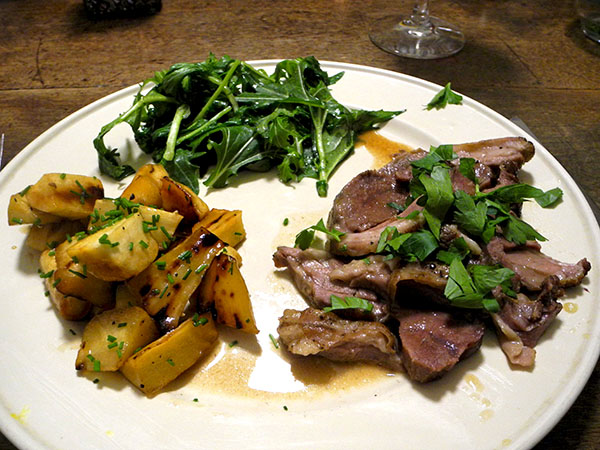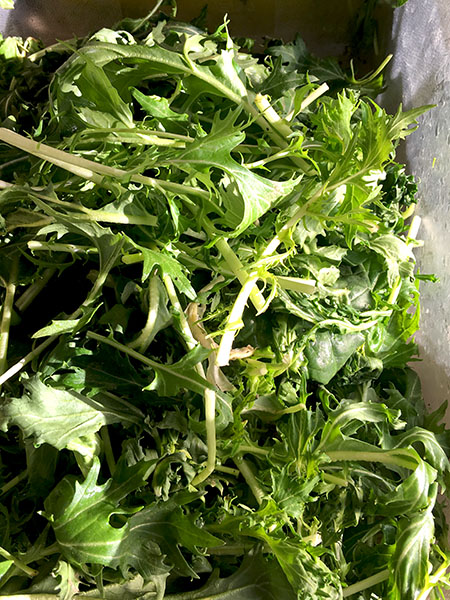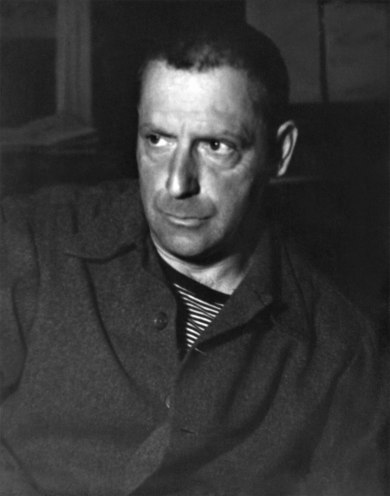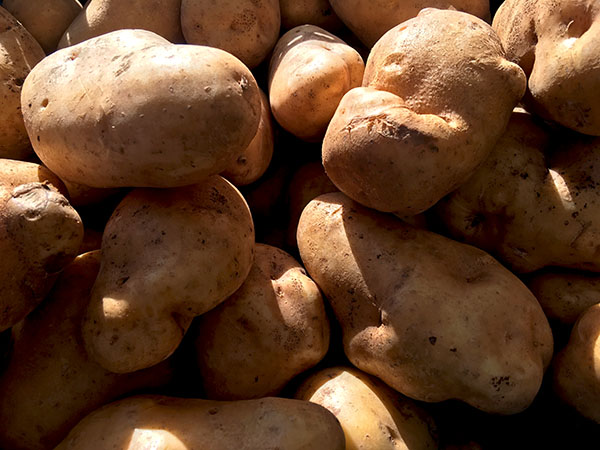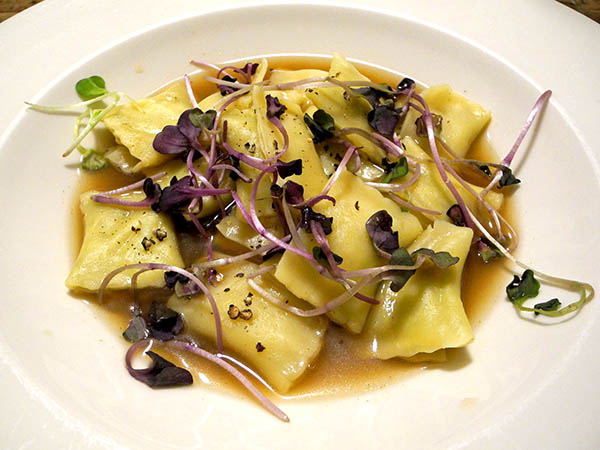
I had been keeping a package of German filled vegetable pasta, ‘Maultauschen‘, in the freezer for just this opportunity.
I had purchased it from Schaller & Weber, the last German food store in old Yorkville, weeks before; it was on the day after the opening of the Second Avenue Subway (conveniently, at least now that its construction is complete, there’s an entrance just outside the store). Last night, looking around for ideas for a meal of pasta, for a break between meat and fish entrées, I remembered that I had both the Maultauschen and the perfect Brühe to serve it in: some rich broth that remained from the braised chevon (goat) shoulder which we had enjoyed on Sunday.
It was a match made in Manhattan, and in fact it might have been possible only in Manhattan. It seems the filled pasta can be found here, but Goat is not a big item in Schwaben, or in Berlin for that matter.
They were absolutely delicious.
- one 10.6-ounce (300 grams) package of frozen Melle’s Best ‘Mini Maultauschen’ – vegetarisch, from Schaller & Weber, boiled in a large amount of water for a very few minutes, drained, slipped into a high-sided tin-line heavy copper pan in which some clear rich goat broth, or Brühe, had already been warmed, the Teigwaren first allowed to get a little friendly with the liquid, both then removed to wide bowls and sprinkled with a little freshly-ground Tellicherery pepper and a little micro purple radish from Two Guys from Windfall Farms scattered over the top
- the wine was a German (Mosel) white, Urban Riesling 2011 from das Weingut St. Urbans-Hof, from Philippe Wine and Spirits on West 23rd Street
- the music was the album, ‘Orfeo Chaman‘, an opera composed and arranged by Christina Pluhar, “a retelling of the Orpheus myth drawing on Baroque music and folksongs from South America to Sicily”, with Nahuel Pennisi in the title role
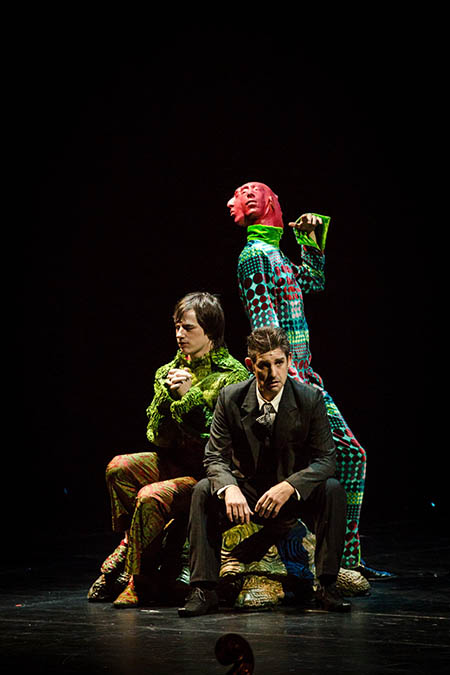
[still of an ‘Orfeo Chaman’ scene, Pennisi on the left, from Warner Classics]
